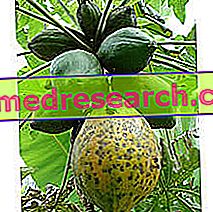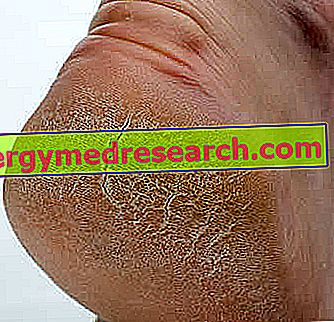Introduction
The uses of avocado oil are many and varied. This product, in fact, has numerous properties that make it useful both in the nutritional and in the cosmetic field.

Production
The avocado oil is extracted from the pulp of the fruit of Persea americana, by cold pressing or centrifugation. The production process is similar to that of the other oils and in any case variable in relation to the technologies adopted by the plant; the avocado fruits are cleaned, peeled and pitted; a rough pressing follows with maceration by moist heat (about 75 ° C), and subsequent centrifugation of the product. The avocado oil thus extracted is then rectified to eliminate the undesired components and make it palatable to the eyes of the consumer.
There are two main applications of avocado oil: food and cosmetic.
Nutritional Properties
Use in Cooking and Nutritional Properties of Avocado Oil
The acidic composition, therefore the qualitative and quantitative content in fatty acids, is very similar to that of olive oil; analyzing it, we note in fact a high content of oleic acid (55-75%), which accounts for the high smoke point of avocado oil (255 ° C), which, like the olive oil, therefore represents an excellent choice for fries; for the same reason it does not go rancid easily. The richness in monounsaturated fatty acids makes avocado oil a useful aid in the prevention of cardiovascular diseases, provided it is consumed with due moderation and instead (not in addition) of animal fats or hydrogenated margarines. Still on the same level as olive oil, the saturated fat content is modest and in any case comparable (palmitic acid: 9-20%); there are also similar concentrations in palmitoleic acid (3-7%), linoleic acid (precursor of omega-six, 9-14%), and alpha-linolenic acid (precursor of omega-three, 0.5%).
A peculiar characteristic of avocado oil is the richness of its unsaponifiable fraction, where tocopherols (vitamin E), carotenoids (vitamin A precursors) and phytosterols (beta-sitosterol, campesterol, citrostadienol, etc.) abound, terpenic alcohols, avocatine and volatile acids. These components are greater in virgin cold-pressed avocado oils, while they are largely lost through refining processes. A quality virgin avocado oil can be recognized, except for its sophisticated chlorophyll, because of its dark green color and its rich and viscous appearance; the refined one is light yellow and contains few nutrients.
Avocado Oil In Cosmetics
See also: Avocado Oil in Cosmetics
The richness of the unsaponifiable fraction, together with the particular composition of fatty acids, accounts for the well-known nourishing properties of Avocado oil. This product is widely used in cosmetics due to its excellent eudermic and sebum-like, nourishing and regenerating characteristics, which make it particularly suitable for dry, devitalized, rough, dehydrated, eczematous or "dull" skin. The functional substances contained in the unsaponifiable fraction of avocado oil are in fact able to stimulate the activity of dermal fibroblasts, promoting the synthesis of soluble collagen (with aging this fraction tends to decrease in favor of the insoluble one); on the other hand, avocatins act as collagenase inhibitors, a protease that destroys collagen fibers. All this translates into an effective action of stimulating skin renewal, with a consequent increase in skin hydration and elasticity. By virtue of these characteristics, cosmetics containing Avocado oil, or enriched with its unsaponifiable fraction, are particularly suitable in anti-wrinkle, anti-stretch mark, firming and sun-protecting treatments. Moreover, the remarkable normalizing capacities of the skin's hydrolipid mantle make avocado oil a precious ingredient for all cosmetic products intended for restoring physiological softness and hydration of the skin.

Do-it-yourself
Avocado oil is also widely used in the field of DIY. In fact, many consumers use this pure and virgin (unrefined) oil for the preparation of wraps and masks for face and hair. Indeed, there are those who use this product to counteract dandruff and dermatitis.
Dry Hair Pack with Avocado Oil
Making a hair pack with avocado oil is very simple: just apply a small amount of oil on the hair, gently massaging it and leaving it on for about 30-60 minutes. After that, you can proceed with the normal shampoo.
This treatment can be repeated once or twice a week, depending on your needs.
Similarly, avocado oil can be used as a replacement for normal moisturizing products. Usually, for better results, it is recommended to apply the product over the entire skin just after the shower.
Side effects
Normally, the cosmetic use of avocado oil does not cause any kind of undesired effect, since it is a well tolerated product. However, the possibility of emergence of allergic reactions in sensitive individuals cannot be excluded; however, this may also occur when avocado oil is used in the kitchen.



